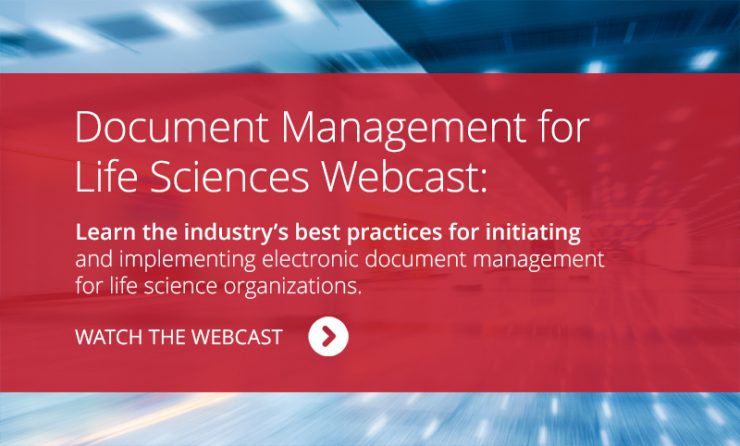January 16, 2017
Risk management remains a strong focus of the FDA. A revised FDA guidance offers new details and hones the scope previewing the agency’s pilot test of a risk-based system to track pharmaceutical manufacturers’ data submissions.
Revised FDA Guidance for Pharmaceutical Manufacturers
“Quality metrics are used throughout the drugs and biologics industry to monitor quality control systems and processes and drive the continuous improvement efforts in drug manufacturing,” the November 2016 revised FDA guidance notes, emphasizing the importance the agency places on these metrics. The guidance includes a valuable explanation of how the FDA Center for Drug Evaluation and Research (CDER) and the FDA Center for Biologics Evaluation and Research (CBER) will incorporate data from pharmaceutical manufacturers generated by the initiative.
Quality Metrics Reporting Program: Voluntary until 2018
For now, the quality metrics reporting program is voluntary and slated for an early 2018 kick-off. However, pharmaceutical and biologics manufacturers would be well advised to become more familiar with the program and begin to develop new standard operating procedures (SOPs) and identify the right quality management system (QMS) solutions to be ready.
Risk Management System: Why Update Now?
There are several reasons to move ahead now rather than waiting until 2018.
For starters, the FDA notes that implementing a robust risk management plan and producing risk-based metrics will influence how it develops compliance and inspection policies and practices, such as risk-based inspection scheduling for pharmaceutical manufacturers.
FDA makes another somewhat subtle pitch for industry participation, noting that participation provides pharmaceutical manufacturers with the “opportunity to demonstrate transparency and a willingness to engage with the agency proactively.” In other words, while a pharmaceutical manufacturer doesn’t have to engage in the quality metrics program, it’s an excellent way to promote good relations with the FDA.
A #riskmanagement system is a key part of your quality management efforts.
Learn about AssurX QMS software today. http://ow.ly/qP0y307h4Sy
— AssurX (@AssurX) December 20, 2016
Potential Outcome of Limited Volunteers
Another factor to consider: If FDA doesn’t get enough voluntary participation, it could mandate a harsher version of the program because it won’t have enough actual industry-generated data from pharmaceutical manufacturers to develop parameters. While the FDA doesn’t explicitly say that common sense in the new guidance tells us it’s a potential outcome.
Impact of Voluntary Quality Metrics Reporting Program
Instead, the FDA hopes to use the data from the voluntary program to focus its resources on those areas of highest risk to public health, e.g., risk-based inspection scheduling. Specifically, the agency will:
- Establish a signal detection program as one factor in identifying establishments and products that may pose a significant risk to consumers
- Identify situations in which there may be a risk for drug supply interruption
- Improve the effectiveness of establishment inspections
- Improve FDA’s evaluation of drug manufacturing and control operations
Key Insights from FDA Guidance
There are several essential takeaways in the FDA guidance.
First, FDA encourages reports from reporting establishments and site reporting establishments. The FDA prefers all covered establishments to work with a product reporting establishment and report data for all the covered pharmaceutical products so that the product reporting establishment submits a single product report that includes data from all covered establishments.
Document Management & Complaint Handling Critical to Compliance
Document management and complaints management are critical to FDA compliance, especially in understanding and meeting the FDA’s quality metric reporting categorization. A robust quality management system (QMS) like AssurX built for the life science industry and incorporates multiple solutions like document management, complaints handling, and risk management are essential to prepare for the 2018 quality metrics program mandate and ensure FDA compliance.
How Will Quality Metrics Be Calculated?
Here’s how the FDA will calculate quality metrics for each product:
- Lot Acceptance Rate (LAR) as an indicator of manufacturing processes performance. LAR is the number of accepted lots in a timeframe divided by the number of lots started by the same covered establishment in the current reporting timeline.
- Product Quality Complaint Rate (PQCR) is an indicator of patient or customer feedback. PQCR is defined as the number of product quality complaints received for the product divided by the total number of dosage units distributed in the current reporting timeframe.
- Invalidated Out-of-Specification (OOS) Rate (IOOSR) is an indicator of the operation of a lab. IOOSR is defined as the number of OOS test results for lot release and long-term stability testing invalidated by the covered establishment due to an aberration of the measurement process divided by the total number of lot release long-term stability OOS test results in the current reporting timeframe.
FDA Compliance Recommendation
Here’s the bottom-line: When the FDA asks nicely for something, the wise regulated entity will take a long, hard look at it and do its best to participate and be proactive in compliance. It’s also a pretty good excuse to put document management and data integrity capabilities to the test.



